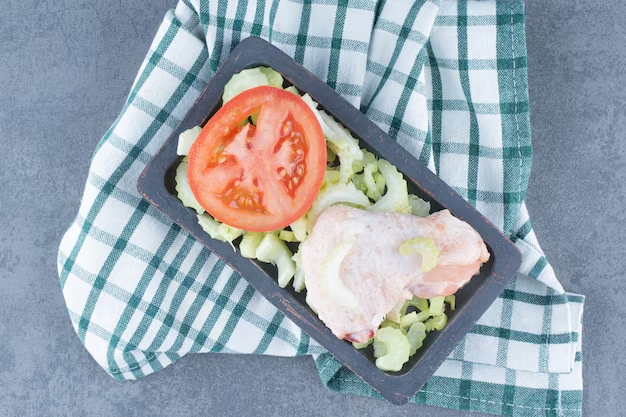Storing Scallops: How Long Can They Last in Your Refrigerator?
When it comes to seafood, there's nothing quite like a succulent scallop. Whether seared to perfection or incorporated into a creamy pasta, scallops are a versatile delicacy cherished by seafood lovers. However, enjoying their delightful taste requires careful handling and storage, particularly in the refrigerator. So, how long can scallops last in your fridge, and what steps can you take to maximize their shelf life?
Ensuring Freshness: A Comprehensive Guide
Understanding Scallop Shelf Life
Fresh scallops are a joyful and delicate ingredient that needs respectful storage to preserve their quality. Typically, fresh scallops can last for about 1 to 2 days in the refrigerator. However, this timeframe can vary based on several factors, including the initial freshness of the scallops at the time of purchase and how they're stored at home. It's important to note that scallops should be consumed as soon as possible to enjoy them at their best quality.
Factors Affecting Shelf Life
1. Initial Quality
Before storing scallops, consider their initial freshness. Scallops purchased from a reputable seller who follows strict seafood handling protocols will likely outlast those from less reliable sources.
Tip: Look for scallops that smell like the ocean, feel slightly firm to the touch, and appear creamy white without any discoloration.
2. Storage Temperature
Optimal storage temperature is crucial for maintaining the quality of scallops. They should be kept at a consistent refrigerator temperature of below 40°F (4°C). This limit helps slow down bacterial growth and preserve their fresh taste for as long as possible.
3. Proper Packaging
How scallops are packaged can significantly influence their shelf life. Store them in a container sealed tightly or a plastic bag to avoid exposure to air and moisture. For best results, line the container or bag with paper towels to absorb excess moisture.
Note: Avoid storing scallops directly with other strong-smelling foods, as they can easily absorb odors.
Signs of Spoilage
Recognizing the signs of spoilage can prevent foodborne illnesses and ensure that you enjoy your scallops while they are in their prime. Here’s what to look out for:
- Unpleasant Odor: A strong, sour, or ammonia-like smell indicates that the scallops are no longer safe to eat.
- Discoloration: Fresh scallops should be creamy white. Any browning or yellowing is a sign of spoilage.
- Texture Changes: Scallops should remain firm. A slimy or mushy texture indicates they have gone bad.
How to Maximize Shelf Life
1. Use of Ice
When storing fresh scallops, consider keeping them on a bed of ice within a container in your fridge. This helps maintain a consistent cold environment. Remember to drain excess water from melted ice daily.
2. Freezing for Longevity
If you need to extend the shelf life of scallops, freezing them is an effective option. Properly frozen scallops can last for up to 3 months without losing much of their original flavor or texture.
Freezing Tips:
- Rinse scallops under cold water and pat dry before freezing.
- Place them in a freezer-safe bag, removing as much air as possible before sealing.
- Label the bag with the date to keep track of frozen times.
3. Preparing Scallops for Refrigerator Storage
Prior to refrigeration, prepping your scallops can give you some extra wiggle room in terms of freshness. Rinsing them lightly and patting dry ensures they are clean and reduces bacterial growth.
Related Subtopics for Context and Practicality
Cooking and Serving Scallops Safely
Proper cooking not only enhances the flavor but also ensures the scallops are safe to consume. Scallops should be cooked to an internal temperature of at least 145°F (63°C). Overcooking can lead to a tough texture, so careful attention is advised.
Pairing Scallops with Side Dishes
If you’re planning a meal with scallops, consider pairing them with complementary sides such as a light salad, roasted vegetables, or creamy risotto. These pairings can enhance their flavor profile and create a balanced dish.
Sustainability of Scallops
As more consumers become eco-conscious, sustainable seafood choices are gaining attention. Look for scallops that are responsibly sourced, often indicated by certifications from programs like Marine Stewardship Council (MSC). This choice supports healthier oceans and ensures that scallops will be available for future generations.
Quick Summary: Scallop Storage Tips & Reminders
🔑 Key Tips for Storing Scallops:
- Freshness First: Use fresh scallops within 1 to 2 days.
- Refrigeration: Keep them below 40°F (4°C).
- Packaging: Store in airtight containers with paper towels.
- Check for Spoilage: Look out for foul odors, discoloration, and slimy texture.
- Ice It: Store on ice if possible for longer freshness.
- Freeze: For longer storage, freeze for up to 3 months.
By following these guidelines, you can ensure that your scallops remain fresh and safe to eat, allowing you to savor their unique flavor anytime.
A Thought to Digest
Scallops offer a delightful culinary experience, but preserving their quality in the refrigerator requires a mindful approach. By understanding the nuances of storage and employing effective techniques, you can extend their shelf life and enjoy them at their best. This knowledge not only enriches your dining experience but also embodies a practice of minimizing waste and encouraging mindful consumption in your kitchen.
